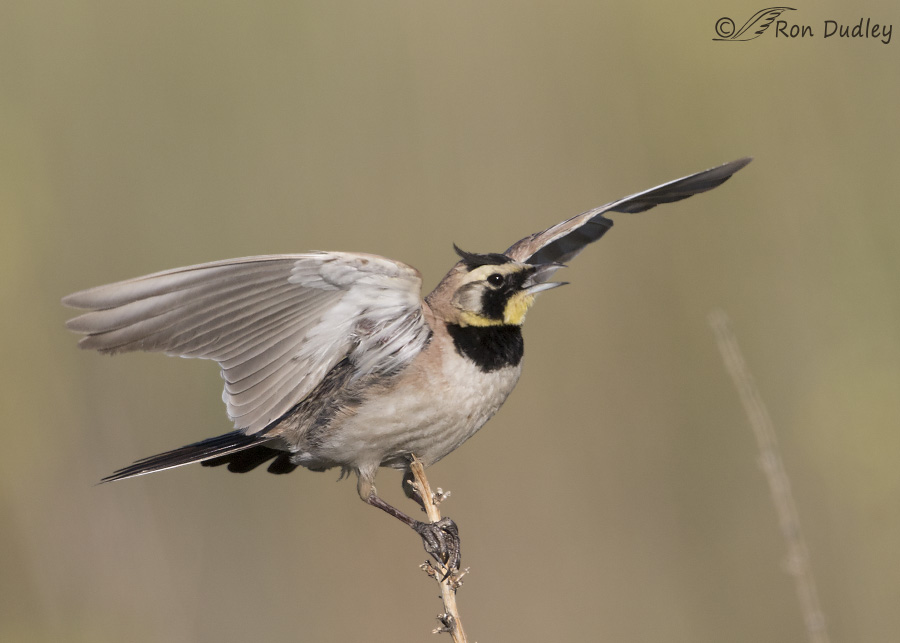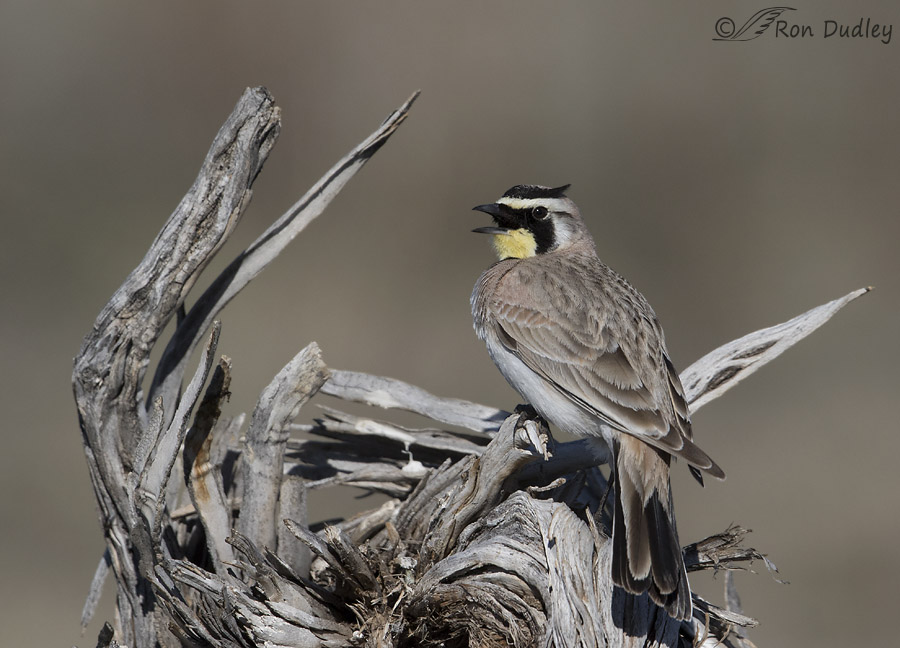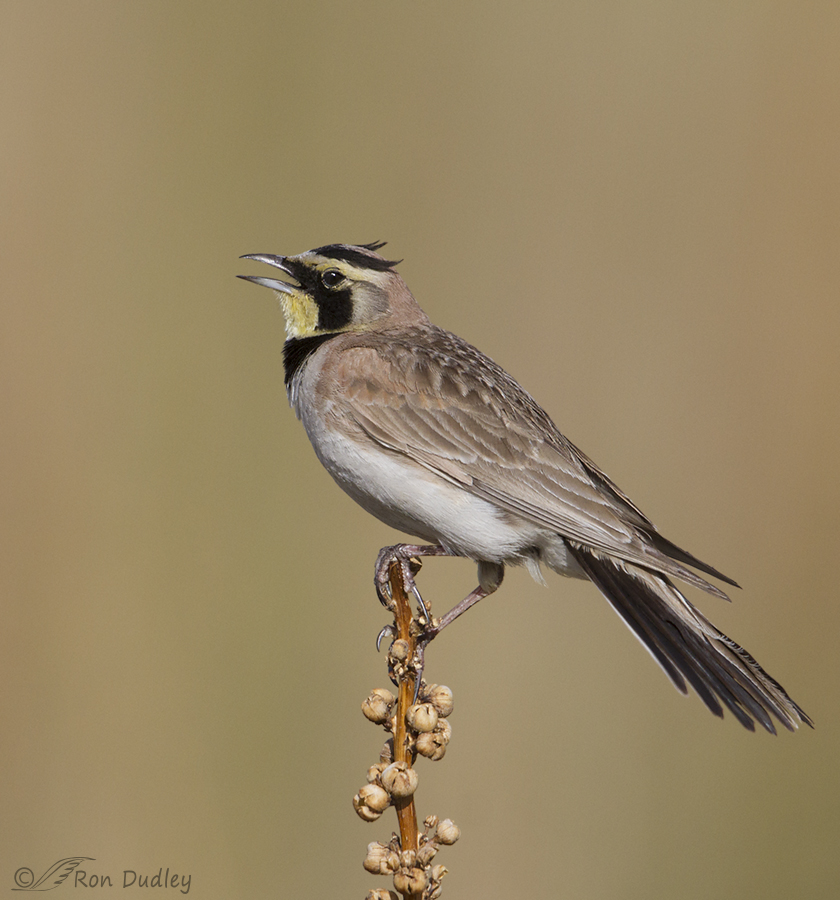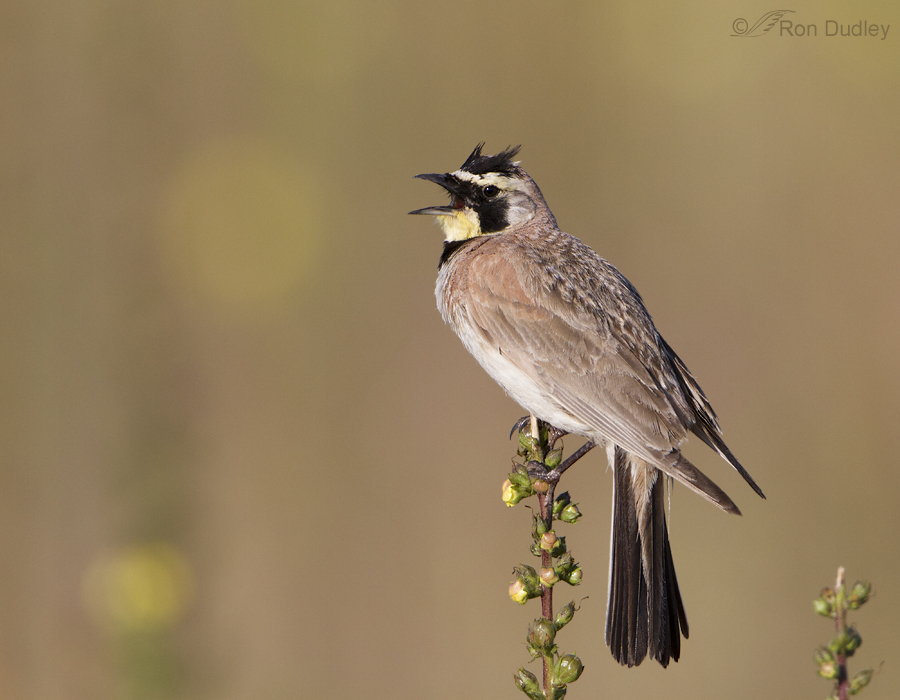Tag: eremophila alpestris
Note To Self – Don’t Ignore The “Common Species”
Horned Larks On Perches Other Than Rocks
Horned Larks Attending To Domestic Duties
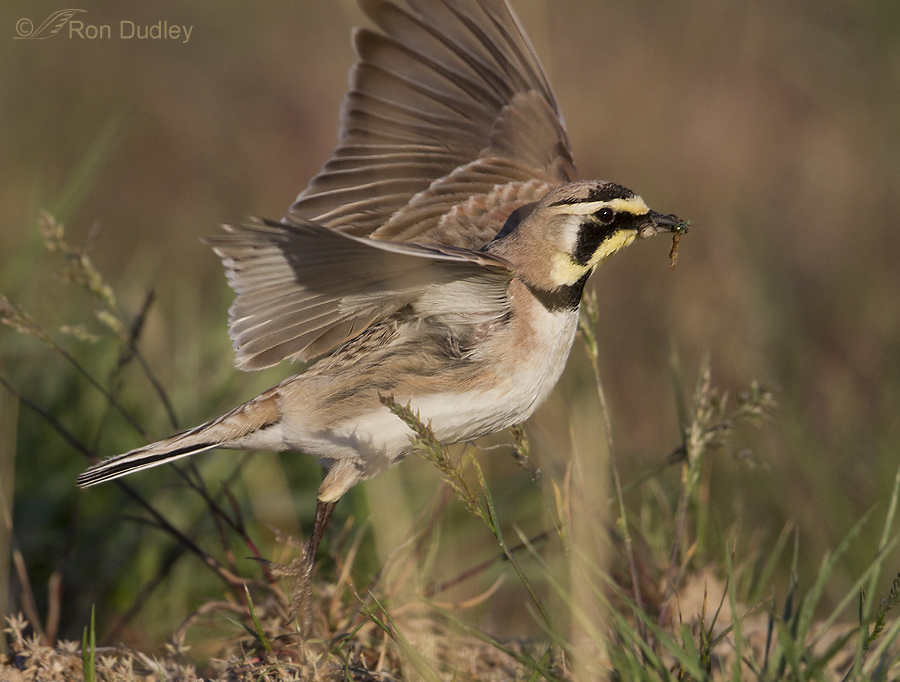
It’s not easy to get photos of Horned Larks with insects in their beaks. The diet of adults of the species consists largely of seeds year-round but they do feed insects to their young so if you can catch them at the right time of year it’s possible to get photos of them with insects. Yesterday morning in the foothills of the Stansbury Mountains I photographed both a male and a female with their beaks full of insects.
Birds “Wearing To Dark” – Some Visual Evidence As To Why
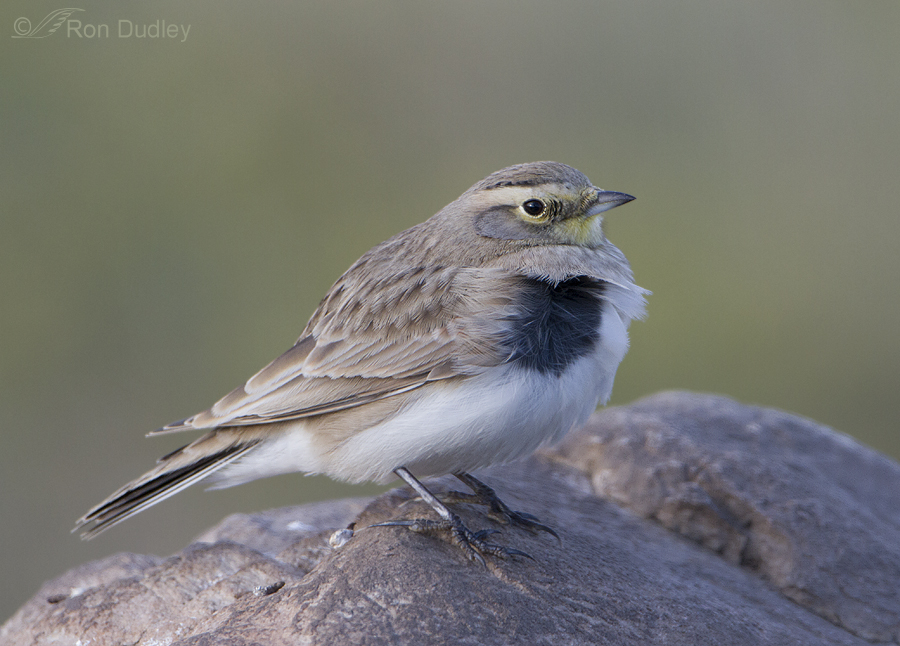
This past summer I posted these first two Loggerhead Shrike images as evidence that the ventral colors of the species change from white to almost black as the summer wears on and asked my readers why this occurs. Several responded with a logical explanation.
Three days ago I photographed a Horned Lark that may demonstrate that those readers were right.
Horned Lark On Mullein
Horned Larks
Horned Larks aren’t one of the “glamour species” for many, probably partly due to the fact that they’re so widespread and common. They’re found throughout most of North America and much of Eurasia. One of my scientific heroes, Carl (Carolus) Linnaeus, assigned the Latin name Eremophila alpestris (meaning “lark of the mountains”) to this bird, despite the fact that they commonly inhabit prairies, farmlands and deserts. These were the most common birds, by far, on the Montana farm where I grew up and they always bring back fond memories for me. Many folks think of them as just another “mostly brown little bird” but when you get close their colors and patterns really stand out. I really enjoy their soft, subtle call and have spent many hours watching them up close through my lens. These photos were taken on Antelope Island in the last few weeks. 1/1600, f/6.3, ISO 500, 500 f/4, 1.4 tc, natural light, not set up or called in The sexes are similar, though the colors of the males are more vivid and the namesake “horns” of the female are less evident than those of the male. This is the female. 1/1600, f/6.3, ISO 500, 500 f/4, 1.4 tc, natural light, not set up or called in She posed for me for quite a while before flying off. 1/2000, f/7.1, ISO 500, 500 f/4, 1.4 tc, natural light, not set up or called in This is the male, in a setting that shows more habitat. Often the black horns are laid back flat on…
Horned Lark On Wild Sunflowers
I’ve always had a soft spot for Horned Larks because they remind me so much of growing up on the family farm in nw Montana. But in virtually all of my images of them they’re perched on rocks or on the ground. 1/2000, f/7.1, ISO 640, 500 f/4, 1.4 tc Earlier this week I found this male perched on – yes, another rock. But while I was photographing him he flew to this nearby sunflower head and started picking seeds out of it. I like the setting and that you can see the seed in the beak with the seed husk blowing away in the breeze under the wing-tip. Ron
Horned Larks Blowin’ in the Wind
I have particularly fond memories of Horned Larks from growing up on our northwestern Montana family farm near Cut Bank, Montana. The fallow barley fields and adjacent short grass prairies abounded with them. But since I began photographing birds I’ve had very few opportunities with them here in Utah – until last week when had a grand time with multiple cooperative larks in the foothills of the Stansbury Mountains. And yes, the wind was blowing briskly – a perfect situation to remind me of those Montana larks! Singing in the wind The wind seemed to inspire the males to sing as they all seemed to be singing up a storm on this day, despite the early February date. Blown off the perch While it may look like this male is taking flight, in reality it was being blown off the perch by a sudden gust of wind. If it had been taking off, both wings would be extended. Wind- disheveled feathers In this photo, the wind updraft from the rock perch blew a perfect semicircle of his upper chest feathers into his black neck ring, making him look pretty silly. Very obvious “horns” This photo shows the “horns” (occipital feather tufts) that are characteristic of the species. The horns are found on both sexes but they are much less obvious in the female and rarely erected. This frontal view of the head shows the horns most distinctly when they are raised. Horns laying almost flat At times the horns are laid flat against the…
Note To Self – Don’t Ignore The “Common Species”
Horned Larks On Perches Other Than Rocks
Horned Larks Attending To Domestic Duties

It’s not easy to get photos of Horned Larks with insects in their beaks. The diet of adults of the species consists largely of seeds year-round but they do feed insects to their young so if you can catch them at the right time of year it’s possible to get photos of them with insects. Yesterday morning in the foothills of the Stansbury Mountains I photographed both a male and a female with their beaks full of insects.
Birds “Wearing To Dark” – Some Visual Evidence As To Why

This past summer I posted these first two Loggerhead Shrike images as evidence that the ventral colors of the species change from white to almost black as the summer wears on and asked my readers why this occurs. Several responded with a logical explanation.
Three days ago I photographed a Horned Lark that may demonstrate that those readers were right.
Horned Lark On Mullein
Horned Larks
Horned Larks aren’t one of the “glamour species” for many, probably partly due to the fact that they’re so widespread and common. They’re found throughout most of North America and much of Eurasia. One of my scientific heroes, Carl (Carolus) Linnaeus, assigned the Latin name Eremophila alpestris (meaning “lark of the mountains”) to this bird, despite the fact that they commonly inhabit prairies, farmlands and deserts. These were the most common birds, by far, on the Montana farm where I grew up and they always bring back fond memories for me. Many folks think of them as just another “mostly brown little bird” but when you get close their colors and patterns really stand out. I really enjoy their soft, subtle call and have spent many hours watching them up close through my lens. These photos were taken on Antelope Island in the last few weeks. 1/1600, f/6.3, ISO 500, 500 f/4, 1.4 tc, natural light, not set up or called in The sexes are similar, though the colors of the males are more vivid and the namesake “horns” of the female are less evident than those of the male. This is the female. 1/1600, f/6.3, ISO 500, 500 f/4, 1.4 tc, natural light, not set up or called in She posed for me for quite a while before flying off. 1/2000, f/7.1, ISO 500, 500 f/4, 1.4 tc, natural light, not set up or called in This is the male, in a setting that shows more habitat. Often the black horns are laid back flat on…
Horned Lark On Wild Sunflowers
I’ve always had a soft spot for Horned Larks because they remind me so much of growing up on the family farm in nw Montana. But in virtually all of my images of them they’re perched on rocks or on the ground. 1/2000, f/7.1, ISO 640, 500 f/4, 1.4 tc Earlier this week I found this male perched on – yes, another rock. But while I was photographing him he flew to this nearby sunflower head and started picking seeds out of it. I like the setting and that you can see the seed in the beak with the seed husk blowing away in the breeze under the wing-tip. Ron
Horned Larks Blowin’ in the Wind
I have particularly fond memories of Horned Larks from growing up on our northwestern Montana family farm near Cut Bank, Montana. The fallow barley fields and adjacent short grass prairies abounded with them. But since I began photographing birds I’ve had very few opportunities with them here in Utah – until last week when had a grand time with multiple cooperative larks in the foothills of the Stansbury Mountains. And yes, the wind was blowing briskly – a perfect situation to remind me of those Montana larks! Singing in the wind The wind seemed to inspire the males to sing as they all seemed to be singing up a storm on this day, despite the early February date. Blown off the perch While it may look like this male is taking flight, in reality it was being blown off the perch by a sudden gust of wind. If it had been taking off, both wings would be extended. Wind- disheveled feathers In this photo, the wind updraft from the rock perch blew a perfect semicircle of his upper chest feathers into his black neck ring, making him look pretty silly. Very obvious “horns” This photo shows the “horns” (occipital feather tufts) that are characteristic of the species. The horns are found on both sexes but they are much less obvious in the female and rarely erected. This frontal view of the head shows the horns most distinctly when they are raised. Horns laying almost flat At times the horns are laid flat against the…


